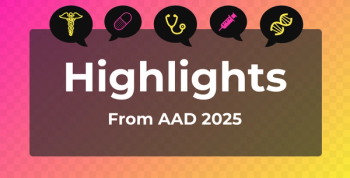
Review Highlights IGHV Testing Complexities in CLL
Key Takeaways
- IGHV status significantly influences CLL prognosis, with mutated IGHV linked to longer survival and unmutated IGHV to shorter progression-free survival.
- NGS enhances IGHV analysis by overcoming Sanger sequencing limitations, allowing for multiple mutation assessments in a single run.
Immunoglobulin heavy chain variable is an important prognostic biomarker in chronic lymphocytic leukemia, but the authors of a new review say its role has yet to be fully understood.
Immunoglobulin heavy chain variable (IGHV) testing has become an important prognostic and therapeutic factor in
In the review, which was
The authors noted that IGHV status has long been linked with patient outcomes. Patients with mutated IGHV have repeatedly been found to have substantially longer overall survival (OS) than those with unmutated IGHV, they explained. Furthermore, IGHV status has been shown to have the second-greatest impact on 5-year survival of any biomarker,
Patients are considered to have unmutated IGHV if they have at least 98% homology to the germline sequence. Cases with homology below 98% or which are borderline are generally deemed to be mutated, and those patients have a more favorable prognosis, Gillan and colleagues said. They said that IGHV mutational status does not evolve over time, so it only requires testing at diagnosis or before initiating treatment.
IGHV status has also been linked with time to treatment and treatment response.
Gillan and colleagues next discussed the guidelines published by the European Research Initiative on CLL (ERIC) and the ways they have evolved over time to answer newly emerging questions.1 First published in 2007, the most recent updates of the guidelines were published in 2022 and 2024. One focus on the 2022 update, they said, is the impact of IGHV mutation status and B-cell receptor immunoglobulin stereotypy on treatment response, the authors said. Another point of emphasis is the growing potential of NGS in immunogenetic analysis.
Gillan and colleagues said Sanger sequencing had long been considered the “gold standard” for IGHV testing, but they said its adoption was limited by its labor intensiveness, technical complexity, limited scalability, and lack of insight into subclonal architecture and intraclonal diversity. More recently, NGS has been found to match the performance of Sanger sequencing, the authors said, without the same drawbacks. Yet, they said current amplicon-based methods of NGS are limited by amplification bias. They said targeted capture NGS can avoid such biases. The investigators discussed the state of the art of IGHV analysis at length, adding that NGS analysis has opened up new insights and new opportunities to refine prognostication.
Gillan and colleagues said one benefit of NGS is that it allows for the combination of multiple assays in a single run, allowing for assessment of multiple clinically relevant mutations—not just IGHV mutations—at once. However, they said the technical advancements will also further the need for additional standardization.
Moving forward, they said a number of issues need to be resolved, including the limited concordance between NGS and flow cytometry methodologies for detecting subclonal B-cell populations. They said the clinical significance of IGHV clonotypes remains unclear. Other questions remain unanswered as well, they said.
The authors said NGS testing has allowed for new insights into the biology of IGHV and how to interpret IGHV mutations.
“The clinical significance of the various IGHV scenarios—including multiple clones, unproductive or absent clones, stereotyped subsets, subclones, and major or minor stereotyped subsets—as well as the impact of novel therapies on IGHV [somatic hypermutation], which may mitigate the poor prognosis associated with certain IGHV clones, will continue to evolve as research in this field progresses,” they concluded.
References
- Wood RK, Elsharawi I, Goudie M, Bruyère H, Rahmani M, Gillan TL. The ABCs of IGHV testing in chronic lymphocytic leukaemia: current recommendations, ongoing challenges, and future directions. Int J Lab Hematol. Published online October 28, 2025. doi:10.1111/ijlh.70010
- Hallek M, Cheson BD, Catovsky D, et al. iwCLL guidelines for diagnosis, indications for treatment, response assessment, and supportive management of CLL. Blood. 2018;131(25):2745-2760. doi:10.1182/blood-2017-09-806398
- Thompson PA, Bazinet A, Wierda WG, et al. Sustained remissions in CLL after frontline FCR treatment with very-long-term follow-up. Blood. 2023;142(21):1784-1788. doi:10.1182/blood.2023020158
Newsletter
Stay ahead of policy, cost, and value—subscribe to AJMC for expert insights at the intersection of clinical care and health economics.







































